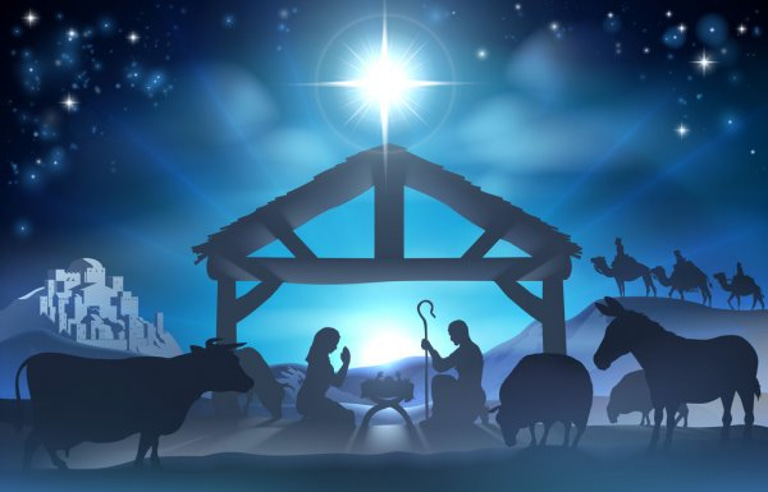Understanding Elephants in Nativity Scenes: A Closer Look
Discover why medieval artists chose elephants for the Magi's journey to Bethlehem. Explore the East’s significance in Nativity art today.
Grace Callahan
12/12/20247 min read
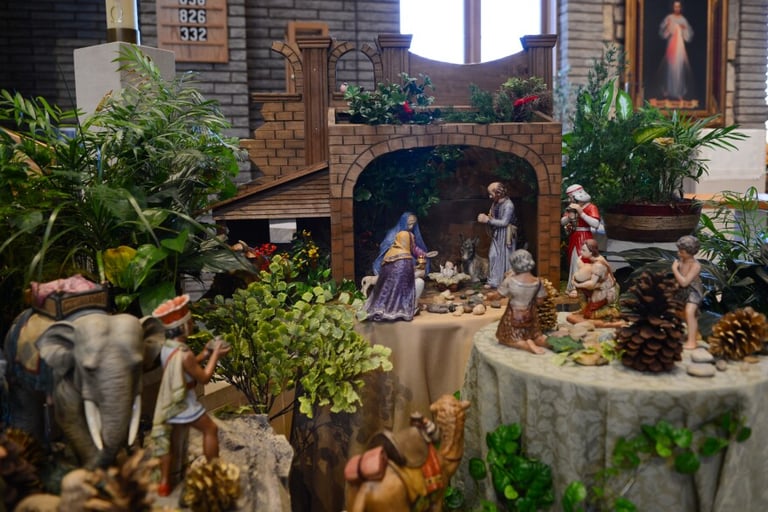

The Nativity story, while familiar to many, has inspired interpretations and artistic depictions that span centuries and cultures. Among the most intriguing and perhaps puzzling portrayals are those of the Magi—the Three Wise Men—riding elephants on their way to Bethlehem. This imagery, while far from the biblical account, offers a fascinating glimpse into the medieval imagination and the ways in which art blends history, symbolism, and cross-cultural influences. But why did medieval artists choose to depict the Magi on elephants? What does this artistic choice say about the era’s view of the East and the broader message of the Nativity?
Origins of the Elephant Imagery
To understand the appeal of elephants in the Nativity story, we must first step into the mindset of medieval European artists. The Gospels describe the Magi as coming from the East, bearing gifts of gold, frankincense, and myrrh. However, they say little about the actual journey or the modes of transportation the Magi used. Medieval artists, operating in an era when travel beyond Europe was rare and knowledge of distant lands was limited, often filled in these blanks with imagination and inspiration from exotic tales. The result? Elephants, grand and awe-inspiring, made their way into the Nativity scenes alongside the Magi.
Historically, elephants had been associated with power and majesty. The Greco-Roman world admired them as symbols of imperial grandeur, particularly after Alexander the Great's campaigns in Asia. As trade between Europe, the Middle East, and Asia flourished, stories of Indian kings and their royal elephants spread to the West. These majestic animals became symbols of wealth and status, and the idea of the Magi, foreign kings themselves, riding such creatures fit perfectly with the narrative of their divine mission.
The Artistic Evolution: From Manuscripts to Cathedrals
The first depictions of the Magi with elephants appeared in illuminated manuscripts. These were meticulously detailed works of art, often commissioned by the wealthy or the church, and were sometimes the only visual record of biblical stories during the medieval period. The Book of Hours, a famous type of devotional manuscript, occasionally included elephants in the Magi’s procession, a testament to the artistic creativity of the time. These depictions weren’t intended to be historically accurate but were instead meant to evoke a sense of awe and wonder.
In addition to manuscripts, the elephant imagery found its way into larger forms of medieval art. Stained glass windows and frescoes in cathedrals in France and Italy from the Gothic and Romanesque periods sometimes included elephants as part of their Nativity scenes. Here, the animals took on a more symbolic role, emphasizing the universality of Christ’s birth and the global significance of the Magi’s visit. The inclusion of elephants in these sacred spaces was as much about theology as it was about art—it highlighted the idea that the message of Christ was for all nations and peoples, not just the local or familiar.
The Symbolism Behind the Elephants
But why elephants? What do they represent in the context of the Nativity? Medieval artists weren’t just drawing exotic animals—they were making a statement. Elephants were often seen as symbols of strength, wisdom, and divine authority. These traits mirrored those of the Magi, who were portrayed as wise and powerful men on a mission to honor the Christ child. In this light, elephants weren’t just filler—they served as potent symbols reinforcing the status of the Magi.
Additionally, the choice of elephant speaks to the broader theme of Christian triumph. Some theologians and artists of the time viewed the elephant as a symbol of Christianity’s victory over the pagan world. The majestic, foreign creature was a metaphor for the spread of Christianity beyond the borders of Judea, reaching all corners of the earth. By placing the Magi on elephants, artists visually reinforced the idea that Christ’s birth wasn’t just a local event but a cosmic one, transcending time and space.
The Historical Context: Why Camels Were More Likely
Of course, the elephant imagery, while compelling, doesn’t align with the historical and geographical realities of the Magi’s journey. In the biblical account, there is no mention of elephants—only of wise men from the East following a star to find the newborn King. But when we consider the historical context of the time, camels were much more likely to have been the real mode of transportation.
The Magi, believed to be scholars or priests from Persia or Babylon, would have traveled through deserts and arid lands. In the 1st century, the dromedary camel was a vital part of travel in the Middle East. Camels are built for desert conditions—capable of going long distances without water and surviving on sparse vegetation. They were essential for trade, carrying goods across the Silk Road and other ancient trade routes. Archaeological evidence supports this: the bones of camels have been found at caravanserais—rest stops for merchants along ancient trade routes—further solidifying the camel’s role in long-distance travel in the region.
On the other hand, elephants were far less practical for desert travel. These massive creatures require significant amounts of food and water, making them unsuitable for the harsh desert environment the Magi would have traversed. They also require specialized care, which would have been difficult to provide on a long journey through the wilderness.
The Interplay of Fact and Folklore
Despite the historical impracticality of elephants in the Magi’s journey, their inclusion in art speaks to something deeper—the fusion of fact and folklore. Medieval and Renaissance artists were not necessarily concerned with historical accuracy. Their primary goal was to convey spiritual truths through compelling visuals. The image of the Magi riding elephants was less about geographical fact and more about theological significance. It was a way of showing that the message of Christ’s birth was not just for one people or one place—it was for the entire world.
The use of elephants also allowed for creative flexibility. As global trade expanded and cross-cultural exchanges became more common, artists had access to new stories and new ideas. These elements found their way into religious art, blending local traditions and Christian symbolism. For example, in India, Christian depictions of the Magi riding elephants seamlessly integrated with local customs, where elephants symbolized royalty, wisdom, and divine authority.
In Ethiopia, where Christianity has ancient roots, elephants were also used in religious art, representing strength and nobility. These variations highlight the adaptability of the Nativity story—how it could be reinterpreted through different cultural lenses while maintaining its universal message of hope, peace, and salvation.
A Message for All People: The Global Reach of the Nativity
One of the most profound aspects of the elephant imagery in Magi art is the message it sends about the universality of the Nativity story. By incorporating animals like elephants—symbols of distant lands—artists were able to visually communicate that Christ’s birth was not just for the people of Bethlehem, not just for the Jewish people, but for everyone, everywhere. The Magi themselves, often depicted as kings from foreign lands, were seen as representatives of the entire world coming to honor the newborn King.
This theme of inclusivity is an important one. It reminds us that Christ’s message transcends borders, cultures, and time. Whether we are looking at a medieval fresco in a European cathedral or a modern Nativity scene from Africa or Asia, the inclusion of exotic animals like elephants underscores the global significance of the Nativity story.
The Enduring Legacy of Elephants in Nativity Art
Today, while we understand the historical inaccuracies of the elephant imagery in the Nativity, we can still appreciate its symbolic richness. Elephants continue to appear in Nativity scenes, often in regions where elephants are culturally significant. They serve as a reminder that the message of the Nativity is not confined to one time or place but speaks to people across cultures and generations.
In contemporary Nativity displays, especially those in multicultural communities, the inclusion of elephants and other exotic animals helps to highlight the inclusivity of Christ’s birth. These depictions invite us to reflect on the idea that the Nativity story is for all people, in all places, at all times. Whether seen in a traditional European scene or a modern African or Asian Nativity, elephants remind us of the wisdom, strength, and majesty of the message of Christ.
Conclusion: The Power of Art to Tell a Universal Story
The story of the Magi and their journey to Bethlehem is one of mystery, wonder, and divine revelation. While history may suggest that camels were the likely animals of choice for the Magi, the depiction of the Wise Men riding elephants in medieval and Renaissance art speaks to a deeper truth. Elephants, with their power, majesty, and exotic allure, serve as symbols of the global significance of Christ’s birth.
In these artistic interpretations, the message is clear: the Nativity is for everyone. It’s a story of hope, peace, and salvation that transcends borders and speaks to people of all cultures and backgrounds. So, as you reflect on the Nativity this season, remember that the inclusion of the elephant in the Magi’s journey is not just about an exotic animal—it’s about the vast, universal reach of the love of Christ, a message that extends to all nations and all people, just as it did for the Magi, so long ago.
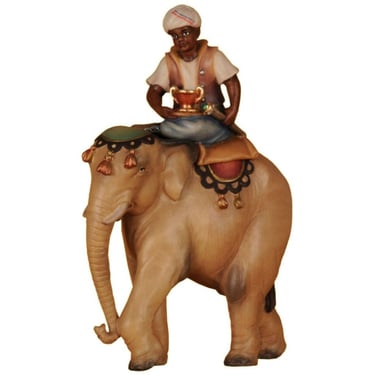

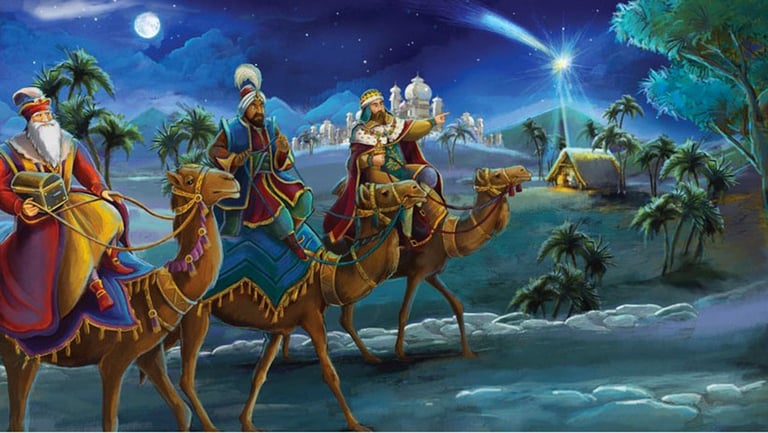

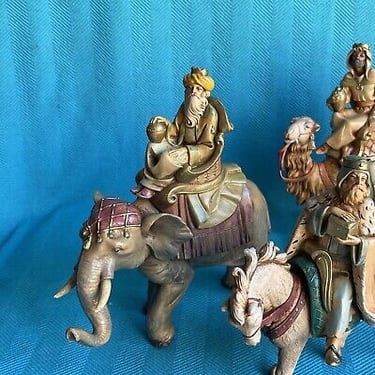

Please see my related posts
The Role of Animals in Nativity: Faith and Tradition
Perfecting Your Nativity Scene: Common Figure Setups
The Star of Bethlehem: A Beacon of Hope in the Nativity
How the First Nativity Scene Came to Life: A Rich History
Faith and Humility: Joseph's Key Contribution to the Nativity
The 3 Wise Men’s Journey: Their Mode of Travel Revealed
The Star of Bethlehem: A Heavenly Mystery Explained
